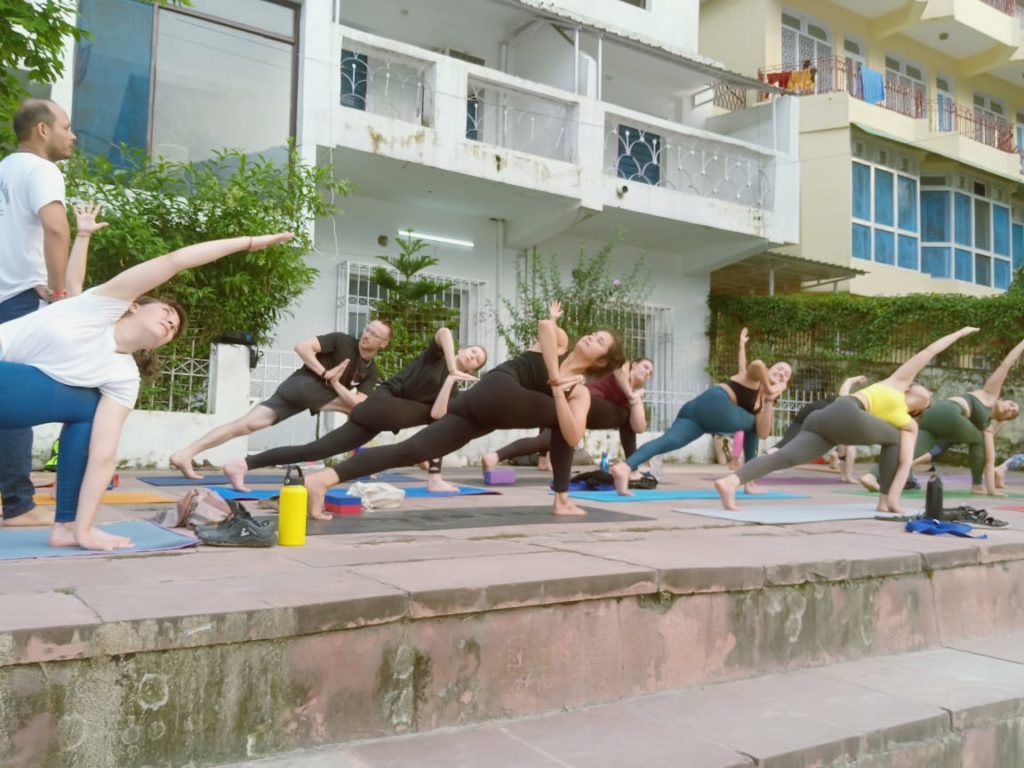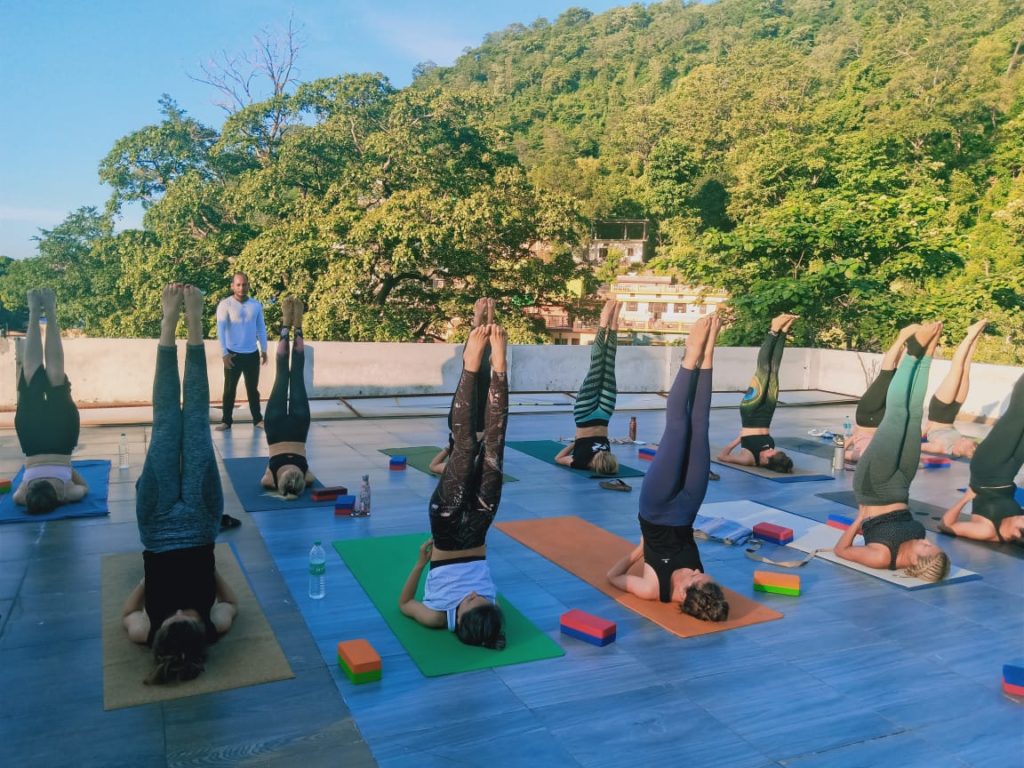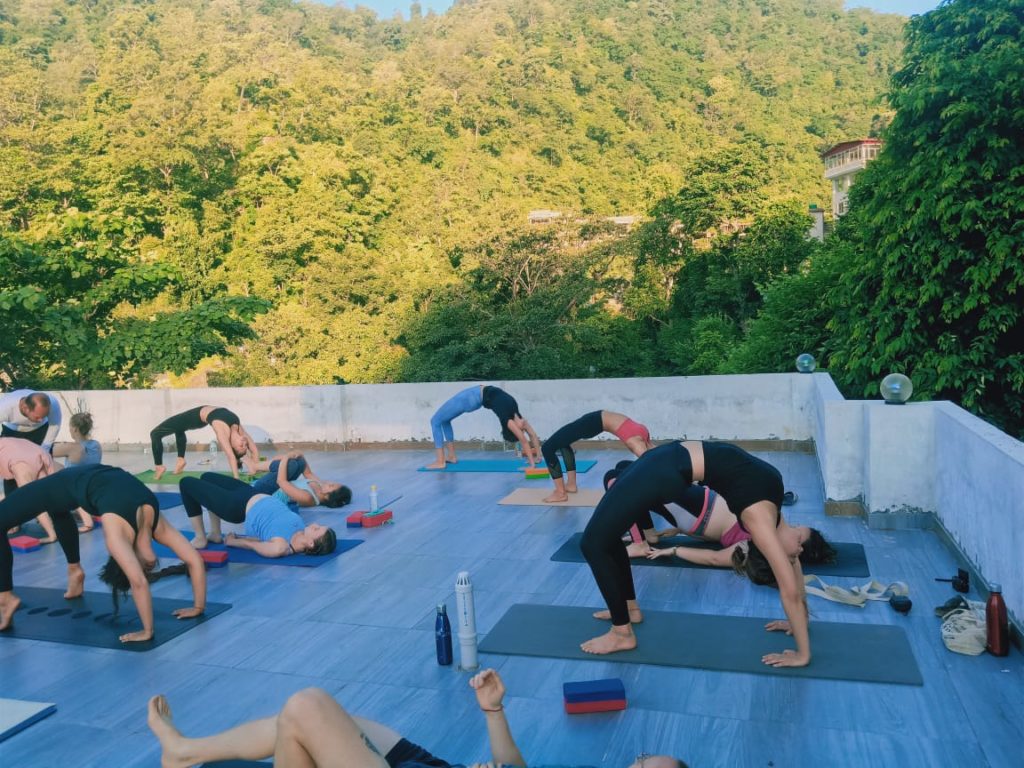Yoga is an ancient art being practiced in various countries for many years. With more and more people discovering numerous benefits of yoga, they are learning multiple forms to enjoy a healthy lifestyle. Yoga helps you combine the physical strength of mind and body. Among all the forms, Hatha and Ashtanga yoga are the most popular among the people. Before you start yoga, it is important to understand the difference between Hatha and Ashtanga Yoga. The two popular forms of yoga can easily be learned at yoga teacher training in Rishikesh.
The Hatha Yoga


The literal meaning of “Hatha Yoga” is a physical practice that can easily be combined with other forms of yoga. In other words, it is a combination of two words “ha” means sun, and “tha” means moon. It includes various yoga poses, deep breathing, focussing on the breath, and meditation.
The practice of Hatha yoga is best for beginners or for them who want to focus more on the gentle and meditative aspects of yoga. With the practice of Hatha yoga, yoga aspirants can experience a powerful transformation and bring a positive change in their life. This form serves as a foundation for all other forms of yoga.
Hatha Yoga is mostly focused on balancing the energy and lead to Nirvana through the physical practice which consists of Shatkarma also known as shatkriyas – Kriyas
There are six shatkriyas listed below in Hatha Yoga:-
Neti: – This is a technique to clean the nasal passage. In yoga, cleaning is important for nasal passage. There are various forms of neti like Jal neti, Dugdha Neti, Ghrita Neti, and Sutra Neti.
Dhauti: – This technique of cleansing the stomach and the digestive tract is known as Dhauti. It consists of four parts Antar Dhauti, Danta Dhauti, Hrid Dhauti, and Moola Dhauti. This yogic kriya helps you keep your stomach and digestion in equilibrium.
Basti: – It helps to purify the colon. The toxins are moved out of the body through defecation, and the colon has a high amount of toxins in the body. Enema is used as Medicated oils and ghee to clean the colon. This cleansing technique helps you to strengthen the digestive systems and increase immunity.
Nauli: – This is performed with massage of the abdomen. It is a kriya to purify the digestive organs and the small intestine. It is done in the circular movement of the muscles in the stomach. There are four types of variations, like Madhya Nauli, Vama Nauli, Dakshina Nauli, and Nauli Kriya.


Trataka: – It is a kriya that requires gazing at an object for a specific time. This kriya brings your mind to a halt. This helps to strengthen the retina muscles, which help to cure eye problems.
Kapalabhati: – This kriya helps to clean the lungs and esophagus. It is a breathing technique that contracts with abdominal muscles while exhaling. It also involves forceful exhaling through the nostrils with a hissing sound.
The Ancient Ashtanga Yoga
The literal meaning of Ashtanga yoga means eight limbs. The eight steps of Ashtanga yoga are going to help you lead a peaceful life. This form of yoga is a perfect blend of ethics and discipline. Every step in Ashtanga yoga has its significance.


Patanjali Eight limbs are — Ancient system of Yoga and Modern Ashtanga yoga is 6 Series/ Mysore and led style.
Eight Limbs of Ashtanga yoga by Patanjali are listed below:-
(a.) Yama (It deals with integrity and ethical standards)
(b.) Niyama (It deals with spiritual observances and disciplines)
(c.) Asana (It’s all about the body postures)
(d.) Pranayama (It refers to breathing technique)
(e.) Pratyahara (It means to detach yourself from the surroundings while being aware of it)
(f.) Dharana (It means concentration)
(g.) Dhyana (It combines both contemplation and the meditation)
(h.) Samadhi (this is the last limb which means ecstasy)
Modern Ashtanga Yoga
In the present time, the Ashtanga yoga has evolved with Ashtanga Yoga Mysore style, which compromises of six series. Krishna Pattabhi Jois founded the Ashtanga Yoga Mysore Style during the 20th century. The Mysore style yoga as a modern-day form of Indian classical yoga. The Mysore style ashtanga yoga is quite hot and energetic with synchronizing breath and movements.


The six series of Ashtanga Yoga are listed below:-
(1.) The primary series – yoga chikitsa, yoga for health, or yoga therapy.
(2.) The intermediate series – Nadi Shodana, which is popularly known as nerve purifier which is also known as the second series.
(3.) The advanced series – Sthira Bhaga, centering of strength
(a.) Advanced A or third series
(b.) Advanced B or fourth series
(c.) Advanced series or fifth series
(d.) Advanced series or Sixth series
Mysore Style: –
In Mysore Style Ashtanga yoga, the students are taught about the sequence of postures through one to one instructions. In this style of yoga, the aspirants can learn the correct movements, breathing, and other aspects of gradually. This yoga style allows each student to practice and memorize the sequence.
Benefits of Learn Mysore Style Yoga
(1.) Helps to increase the level of concentration and focus: – The practice of Mysore style yoga helps you to increase the level of concentration. The physical practice of the Astanga yoga helps you get back on track.
(2.) Move at your Rhythm and pace: – Spend more time on postures that are challenging. This gives you the flexibility to move at your own pace without disturbing the rhythm.
(3.) Stay in Control: – It allows practitioners to keep control over them.


Led Style Yoga: –
The Astanga yoga is traditionally guided by the teacher working slowly steadily with focus. This Astanga led class is a vigorous and dynamic practice that is practiced under the strict guidance of the teachers. The first half of the traditional sequence of postures from the primary series of the Ashtanga Vinyasa yoga system helps you to increase your strength, flexibility, and concentration of the mind. Led style Ashtanga yoga is a traditional 90-minute yoga session that takes you through full led primary series of the Ashtanga Vinyasa method.
Basic Difference between two forms of Yoga
Hatha yoga has seven limbs, while Ashtanga yoga has eight limbs.
Hatha yoga starts with physical postures and eventually leads to meditation while Ashtanga yoga focuses on self, and then moves to the practice of physical postures.
The Final Thoughts
So this is the basic difference between Hatha and Ashtanga yoga. Hatha yoga is best for beginners. Once you command Hatha yoga, the yoga aspirants can start learning Ashtanga yoga to lead a purposeful life.
Watch the Video to hear from Yogi Ji
For more information, write to us on mantrayogmeditation@gmail.com or speak to us on +91-99586723997 for Indian nationals or + 1 7785817945 for foreigners.
Please like our page https://www.facebook.com/Mantra.Yoga.And.Meditation.School/
Read More: A Complete Guide to International Meditation Certification Training in India


